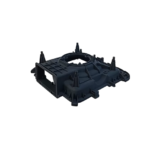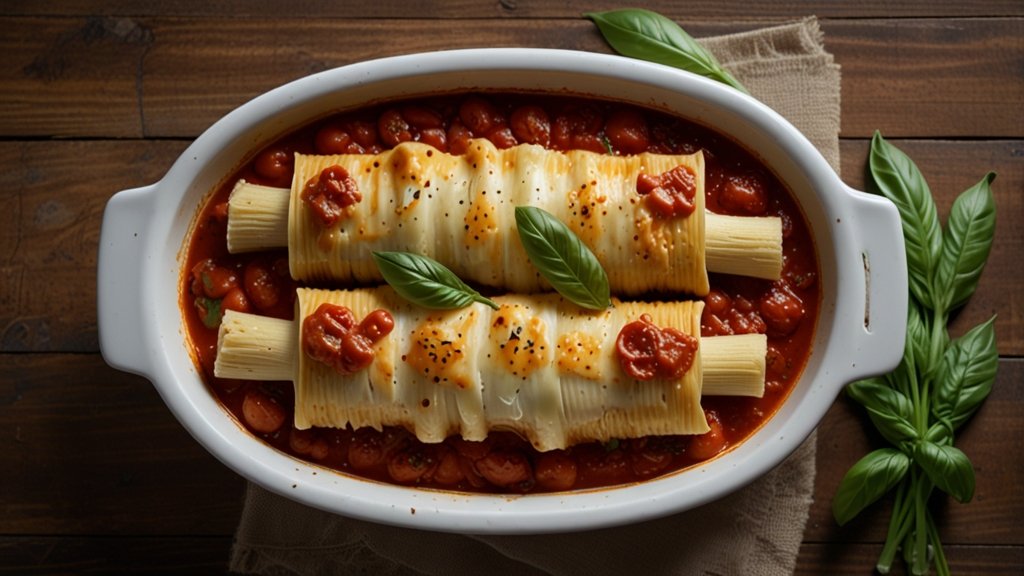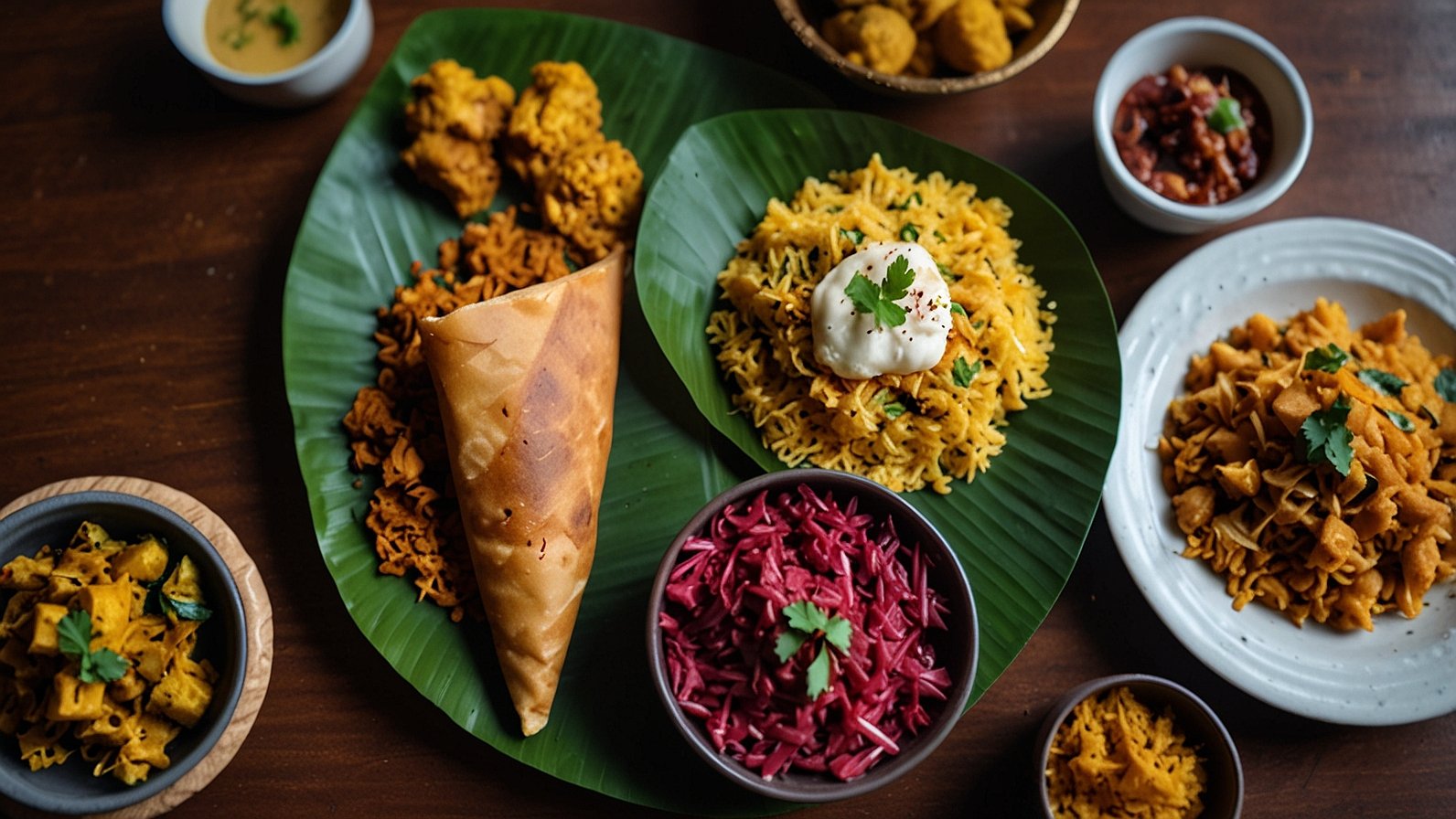Ever stumbled upon a recipe for Mannacote online, browsed Grandma’s handwritten cookbook, or heard it mentioned at a bustling family potluck, only to realize it looks exactly like the manicotti you know and love? You’re not alone, and you’re not mistaken! That moment of delicious déjà vu is the perfect entry point into the charming, slightly mysterious world of this regional pasta moniker. Let’s pull up a chair and unravel the simple, heartwarming truth behind Mannacote.
Mannacote: More Than Just a Spelling Quirk?
At its core, Mannacote isn’t a revolutionary new dish waiting to dethrone its famous cousin. Instead, think of it as a culinary doppelgänger, a regional nickname, or perhaps a cherished family misspelling that took on a life of its own within specific Italian-American communities. The dish itself is pure, comforting familiarity:
- The Pasta: Large, smooth, tubular pasta sleeves – the very same you’d buy labeled “manicotti.”
- The Filling: A creamy, dreamy blend primarily starring ricotta cheese, often elevated with grated Parmesan or Pecorino Romano, fresh herbs like parsley or basil, maybe a touch of nutmeg, and sometimes enriched with cooked ground meat (beef, pork, or sausage) or spinach.
- The Assembly: Those tender tubes are lovingly stuffed with the ricotta mixture.
- The Baking: Nestled in a baking dish, smothered in a vibrant, often homemade tomato sauce, generously topped with shredded mozzarella and more Parmesan, then baked until bubbling, golden, and irresistibly fragrant.
In essence, Mannacote is manicotti. Preparation? Identical. Ingredients? Mirror images. Serving style? The same glorious, cheesy, saucy presentation. It’s a fascinating example of how language and food traditions evolve locally, creating a unique identifier for a beloved classic.
The Birth of a (Delicious) Regional Variation: How Mannacote Earned Its Place
So, how did “Mannacote” emerge if it describes the same dish? The answer lies in the rich tapestry of Italian immigration to America:
- Oral Traditions Reign Supreme: Recipes were often passed down verbally through generations. Pronunciation nuances from different Italian regions (like Southern Italian dialects) could easily lead to variations when written down phonetically in English by second or third-generation descendants. “Manicotti” (ma-ni-cot-tee) might naturally morph into “Mannacote” (man-a-coat) in certain family or community circles.
- Local Lexicons Take Hold: Within tight-knit neighborhoods or specific family groups, these unique spellings and pronunciations became the norm. What started as a possible misunderstanding or phonetic spelling solidified into a recognized term within that community. It was their word for their cherished baked pasta.
- The Recipe Card & Blog Effect: As handwritten recipe cards were shared and, later, as the internet blossomed, these regional or familial terms like Mannacote found new audiences. Someone posts “Grandma’s Famous Mannacote,” and the name gains traction online, even if the recipe is identical to a manicotti recipe from another source. It’s a testament to the power of personal food heritage.
Mannacote vs. Manicotti: Separating Fact from Folklore (Spoiler: They’re Twins!)
Let’s lay any confusion to rest definitively. Below is a clear comparison highlighting that Mannacote and manicotti refer to the exact same culinary creation:
| Feature | Mannacote | Manicotti | Verdict |
|---|---|---|---|
| Pasta Shape | Large tubes | Large tubes | Identical |
| Core Filling | Ricotta-based | Ricotta-based | Identical |
| Common Add-ins | Herbs, Meat, Spinach | Herbs, Meat, Spinach | Identical |
| Sauce | Tomato-based | Tomato-based | Identical |
| Cheese Topping | Mozzarella/Parmesan | Mozzarella/Parmesan | Identical |
| Cooking Method | Stuffed & Baked | Stuffed & Baked | Identical |
| Culinary Origin | Italian-American | Italian-American | Identical |
| Distinct Recipe? | No | No | Same Dish! |
Also Read: Candizi: Your Candy Cravings Met with Clever Wellness & Wow-Factor Flavor
Why Mannacote Isn’t on Italian Menus (And That’s Okay!)
Here’s a crucial point often missed: Mannacote, much like the term “manicotti” itself in this specific context, is fundamentally an Italian-American phenomenon.
- The Italian Originals: In Italy, the closest relative is generally cannelloni. However, traditional Italian cannelloni can sometimes use a fresh pasta sheet rolled around the filling, rather than a pre-formed tube. The stuffed-tube version popular in America is firmly rooted in the immigrant experience, adapting available ingredients (like dried pasta tubes) and tastes.
- A New World Creation: Dishes like Mannacote/manicotti represent the beautiful evolution of Italian cuisine outside of Italy. Immigrants recreated beloved flavors using what they had access to, leading to iconic dishes that, while inspired by the homeland, became uniquely American. Mannacote is a charming linguistic artifact of this adaptation process within specific communities.
Embracing the Mannacote Magic: Why the Name Still Matters
Even though it doesn’t denote a different dish, the persistence of Mannacote is significant:
- A Link to Personal History: For families who have always called it Mannacote, the name is a warm thread connecting them to their grandparents’ kitchen, to specific memories, and to their unique heritage. It’s a term loaded with nostalgia.
- Regional Food Identity: It highlights how micro-communities develop their own culinary lexicons. Discovering Mannacote is like finding a delicious little secret handshake among certain groups.
- Online Discovery: Bloggers and home cooks using “Mannacote” are often sharing treasured family recipes. Searching for it leads you to these authentic, often deeply personal, takes on the classic dish. It’s a gateway to stories, not just ingredients.
Crafting Your Own Delicious “Mannacote” (aka Manicotti!) Experience
Ready to bring this comfort food classic to your table? Whether you call it Mannacote or manicotti, the process is deeply rewarding. Here’s a quick guide:
- The Tubes: Use store-bought dried manicotti tubes. Cook them al dente according to the package – they’ll soften more while baking. Pro tip: Under-cook them slightly to prevent mushiness! Let them cool enough to handle.
- The Heart: The Ricotta Filling:
- 32 oz (approx. 4 cups) Whole Milk Ricotta (drain excess liquid if very wet)
- 1 1/2 cups shredded Mozzarella
- 1 cup freshly grated Parmesan or Romano cheese
- 2 large eggs (helps bind)
- 1/4 cup fresh parsley, finely chopped
- 2 tbsp fresh basil, finely chopped (or 1 tsp dried)
- 1/4 tsp ground nutmeg (optional, classic flavor enhancer)
- Salt and freshly ground black pepper to taste
- *(Optional Add-ins: 1 cup cooked, drained, and crumbled Italian sausage or ground beef; 1 cup cooked, squeezed-dry chopped spinach)*
Mix all filling ingredients thoroughly in a large bowl.
- The Embrace: Tomato Sauce: Use your favorite high-quality jarred marinara or make a simple one: sauté garlic & onion in olive oil, add crushed tomatoes, basil, oregano, salt, pepper. Simmer 20-30 mins. You’ll need about 4-5 cups.
- The Assembly:
- Spread 1 cup of sauce in the bottom of a 9×13 inch baking dish.
- Carefully stuff the cooled manicotti tubes with the ricotta filling. A piping bag or a small spoon works well. Don’t overstuff – they expand!
- Arrange the stuffed tubes in a single layer in the dish.
- Pour the remaining sauce evenly over the top, ensuring all pasta is covered.
- Sprinkle generously with an additional 1-2 cups of shredded mozzarella and 1/4 cup grated Parmesan.
- The Transformation: Baking: Cover the dish tightly with foil. Bake in a preheated 375°F (190°C) oven for 30 minutes. Remove the foil and bake for another 15-20 minutes, until the cheese is melted, bubbly, and slightly golden. Let it rest for 10-15 minutes before serving – this helps it set and makes serving easier!
The Joy is in the Eating (No Matter the Name!)
Ultimately, whether the recipe card says Mannacote or manicotti, the result is the same: a soul-satisfying, cheesy, saucy masterpiece of Italian-American comfort food. It’s a dish meant for sharing, for Sunday dinners, for potlucks, and for creating your own family food memories. The story of Mannacote reminds us that food is more than just sustenance; it’s language, it’s heritage, it’s family, and it’s constantly evolving, one delicious adaptation at a time. So, embrace the term, celebrate the history, and most importantly, enjoy every bite!
You May Also Read: The Engagement Cake: Your Delicious First Step Toward “I Do”
FAQs
Is Mannacote different from manicotti?
No, not in terms of the actual dish. Mannacote is simply a regional or colloquial spelling and pronunciation for the exact same Italian-American baked pasta dish known as manicotti – featuring stuffed tubular pasta baked with tomato sauce and cheese.
Where did the name “Mannacote” come from?
It likely originated from the phonetic spelling of “manicotti” (pronounced ma-ni-cot-tee) within specific Italian-American families or communities, influenced by regional Italian dialects. Over time, this spelling (“Mannacote“) became established in those circles and later appeared in family recipes and online.
Is Mannacote the same as cannelloni?
They are very close relatives! Traditional Italian cannelloni often involves rolling a filling in fresh pasta sheets. The American versions of manicotti and Mannacote typically use pre-formed dried tubular pasta shells. So while conceptually identical (stuffed pasta baked in sauce), the pasta form can sometimes differ slightly at the origin. In the US context, Mannacote/manicotti and cannelloni are often used interchangeably to describe the stuffed tube dish.
Can I find Mannacote in restaurants?
It’s highly unlikely to see “Mannacote” explicitly listed on a restaurant menu. Menus will almost always use the standard term “manicotti” or sometimes “cannelloni.” Mannacote is primarily a term found in home cooking contexts, family recipes, and certain online communities or blogs.
Why should I care about the term Mannacote if it’s just manicotti?
Understanding Mannacote connects you to a piece of culinary and linguistic history within Italian-American immigration. It highlights how family traditions and regional variations in language create unique cultural touchstones around food. If you encounter a “Mannacote” recipe, it often signifies a cherished family version worth trying!
What’s the best way to stuff manicotti/Mannacote tubes?
The easiest methods are using a piping bag (no tip needed, just the bag) or a small teaspoon. Carefully fill the tube without tearing it. Some people also use a zip-top bag with a corner snipped off. Letting the cooked tubes cool completely makes them easier to handle.
Can I make Mannacote ahead of time?
Absolutely! Assemble the dish completely (stuffed tubes, sauced, and topped with cheese), cover tightly, and refrigerate for up to 24 hours before baking. You may need to add a few extra minutes to the covered baking time if starting from cold. You can also freeze the unbaked assembled dish tightly wrapped for up to 2-3 months; thaw overnight in the fridge before baking as directed.











